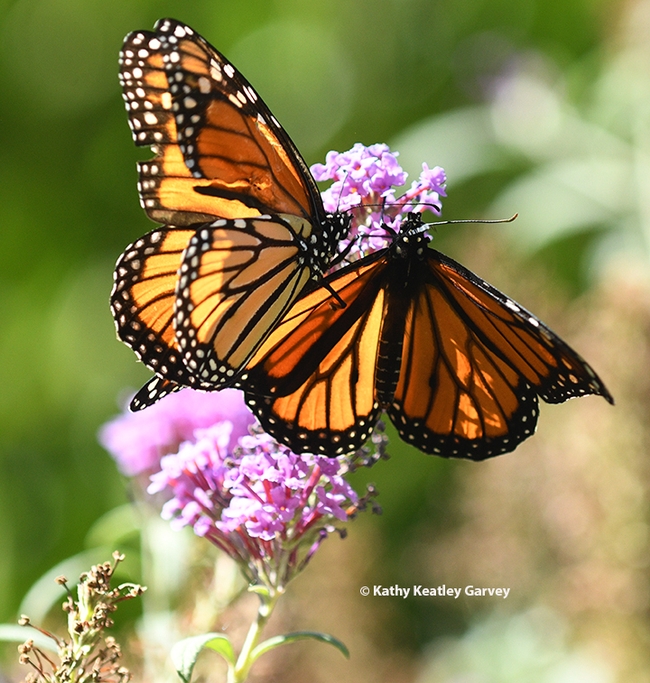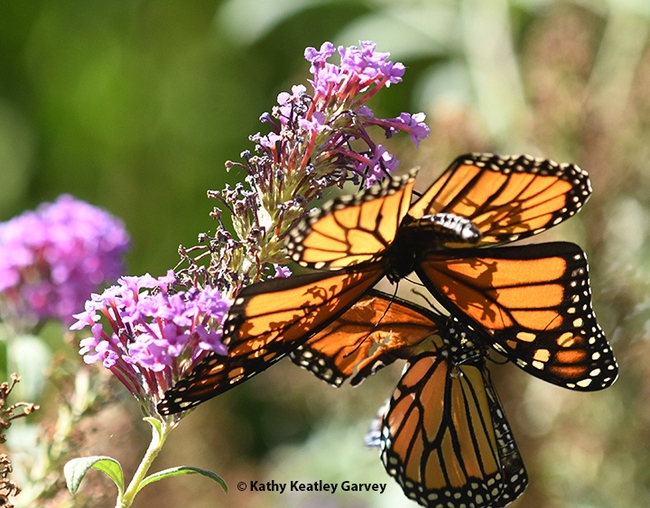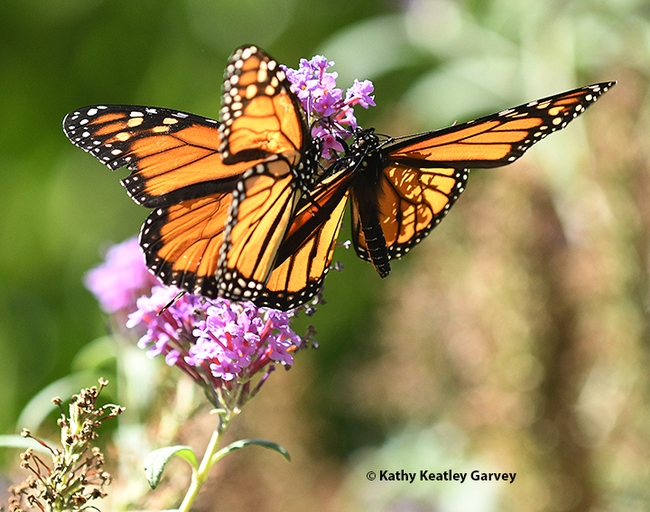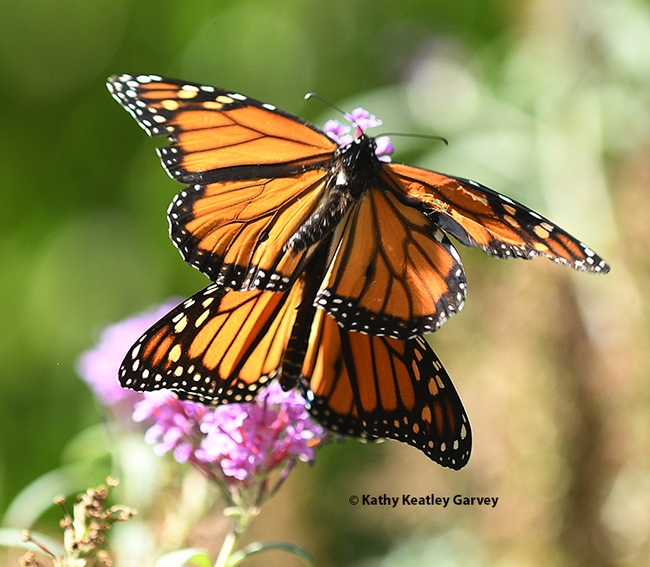- Author: Kathy Keatley Garvey

The Brower quote appears in a newly published book authored by two renowned scientists who research butterflies. The book, an introduction to butterflies of the world, is a “must-have” on your bookshelf.
The book: The Lives of Butterflies: A Natural History of Our Planet's Butterfly Life
The authors: Entomologist David James, associate professor, Washington State University and biologist David Lohman, professor and department chair, the City College of New York.
The publisher: Princeton University Press
Publication date: (U.S.) Jan. 9, 2024.
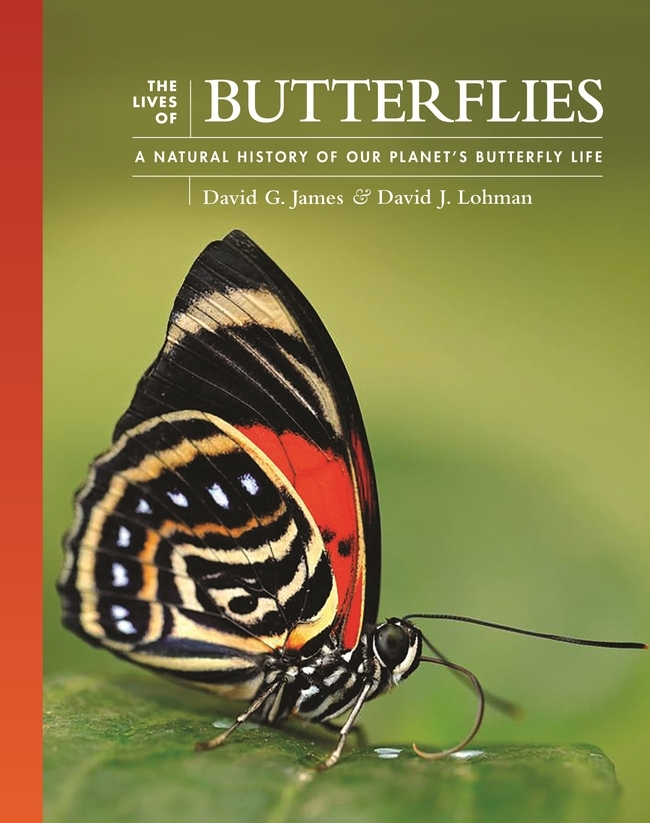
This 288-page book includes eight chapters: Introduction, Life Histories, Habitats and Resources, Butterfly Populations, Butterfly Seasonality, Defense and Natural Enemies, and Threats and Conservation. The close-up images, many by James, spring to life and really confirm their description of butterflies as the "colorful ambassadors of the world."
This is an easy-to-read, fascinating book, complete with a glossary, a list of butterfly families and resources, and, of course, an index.
Some tidbits. Did you know that:
- To date, scientists have described some 19,500 species of butterflies throughout the world?
- Scales give butterflies their color? “The colors of each butterfly have evolved to promote protection to the species from predators and to enable the sexes to find and recognize each other,” they write.
- Butterflies are classified into seven families based on their evolutionary history? And that each family shares physical, behavioral, and ecological features, including body structure, wing characteristics (venation, patterning, and color), host plants, and flight?
- The survival rate of eggs, caterpillars, pupae (chrysalids) is less than 10 percent? What you see are the survivors who have “escaped predation, parasitism, disease and death from unfavorable environmental conditions, including excessive heat, drought, cold, storms, and food shortages,” they relate.
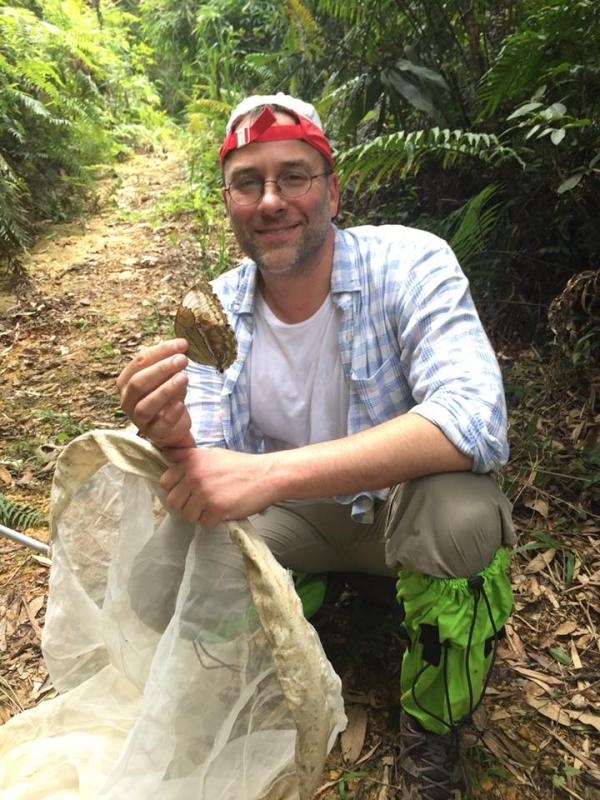
Butterflies, it seems, are also the equivalent of the proverbial “canary in the coal mine,” an early warning of danger in the ecosystem. Take the issue of the declining population of monarchs. Quoting statistics from the Xerces Society for Invertebrate Conservation, James and Lohman point out that monarchs have declined by 80 to 90 percent during the past two decades. The decline, they write, "is caused by a combination of habitat loss, pesticide use, and a warming climate.”
If you live in California, you're not allowed to collect or rear monarchs without a scientific permit.
According to the California Department of Fish and Wildlife: "A Scientific Collecting Permit (SCP) is required to handle wild monarchs in California including for educational purposes. It is unlawful to collect, remove from the wild and/or captively rear monarchs in California without an SCP, per California Code of Regulations (CCR), Title 14, section 650.
But the metamorphosis of a butterfly--from egg to caterpillar to chrysalis to adult--is nothing short of magical. As the authors so succinctly point out: "...our children are the future and it is they who will determine the future of butterflies. If a child finds a caterpillar, let them keep it, feed it, and watch it metamorphose.They will remember the experience for the rest of their life, and it will instill in them a love and appreciation for lives smaller than their own."
They add: “It is important that we do not try to excessively regulate to conserve butterfly populations. We need people to be part of the process and be the power on the ground behind conservation programs.”
The book could have easily been called "The Joy of Butterflies." Butterflies fluttering around the garden on a sunburst day, sipping nectar, and then laying eggs on their host plant, bring us great joy. We marvel at the magic, the miracle of it all.
This book is a great introduction to the lives of butterflies. You'll learn more about their life histories, their habitats, their seasonality, their defensive mechanisms, and what we can do to conserve "the colorful ambassadors of the insect world."
About the authors. James also co-authored Life Histories of Cascadia Butterflies and served as a consultant editor on The Book of Caterpillars. He completed his doctorate on the winter biology of Monarch butterflies and has published more than 200 scientific papers "on a wide range of entomological subjects," the publisher notes. Lohman, in addition to being a professor and department chair, the City College of New York, is a visiting scientist at the American Museum of Natural History, and a research associate at the Museum of Comparative Zoology at Harvard University and at the National Museum of Natural History in Manila. His research focuses on butterflies in Southeast Asia and the ecology, evolution, and conservation of biodiversity.
Their passion for butterflies, coupled with their exemplary research, shows.
Wings up!
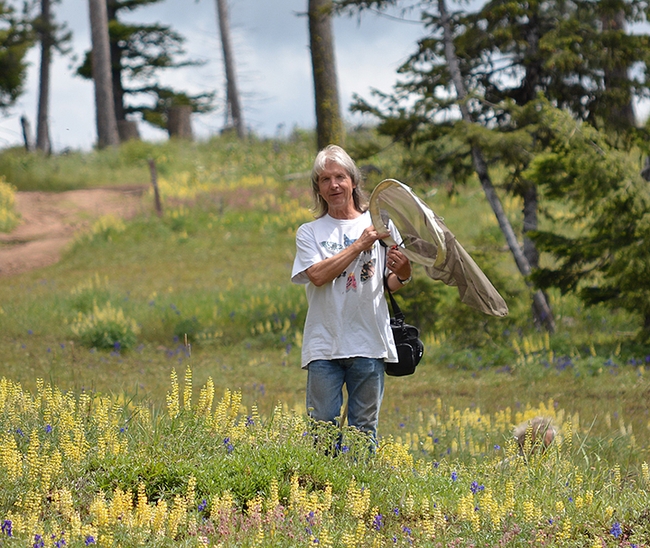
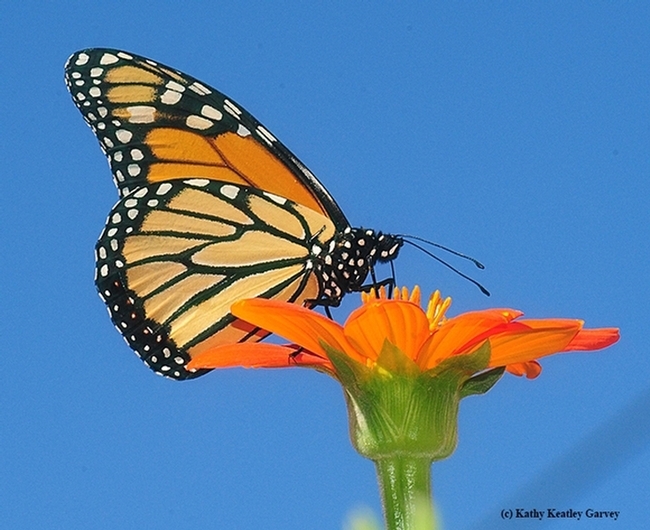
- Author: Kathy Keatley Garvey
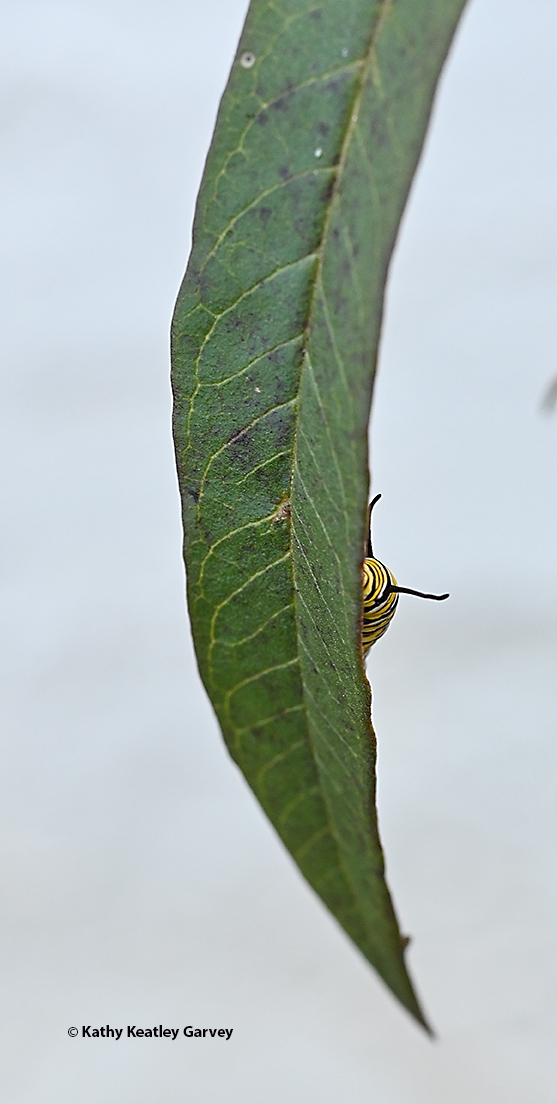
It lived--and quite hidden at that--through the freezing cold, the rain, and the wind. It surfaced today on a milkweed in our Vacaville pollinator garden.
Surprise, surprise! We neither saw it as an egg nor as a tiny caterpillar.
"Most larval mortality in monarchs occurs in the first 2 or 3 instars.. so they keep as hidden and low-key as possible," entomologist David James, an associate professor at Washington State University, told us. "Once they make it to the fourth instar, they are emboldened and are more likely to be seen exposed."
James, who studies migratory monarchs, earlier commented on the fall breeding: "The egg laying females you are seeing now are likely migrants that have eschewed reproductive dormancy for reproduction. This has probably always happened to some extent but is likely more significant now because of warmer falls. The lack of activity in summer in Vacaville was probably a function of most of the population having dispersed further east and north, maybe more than usual? They surely did pass through Vacaville in spring on their way north but clearly didnt stop to use your milkweeds. It does seem that some years they are more prone to frequent stopping/oviposition on their way north and east, yet in others they just keep flying. There's evidence that the latter was the case this year... with as many migrants making it to BC as to Washington...Normally they stop in Washington and only a handful make it to BC."
James is the author of a newly published book, The Lives of Butterflies: A Natural History of Our Planet's Butterfly Life (Princeton University) with colleague David Lohman of the City College of New York. The book, released in the UK on Oct. 3, 2023, will be available in the United States starting Jan. 9, 2024.
Irish scientist Éanna Ní Lamhna recently interviewed the WSU entomologist in a podcast on RTÉ, or Raidió Teilifís Éireann. The book, Lamhna said, "showcases extraordinary diversity of world's butterflies, while exploring their life histories, behavior, conservation and other aspects of these most fascinating and beguiling insects." (See Bug Squad blog). Listen to the butterfly podcast here:
https://www.rte.ie/radio/radio1/clips/22294525/
Meanwhile, we checked another milkweed plant in the garden today and spotted another caterpillar, this one a little smaller and less active than the first.
As UC Davis distinguished professor Lynn Kimsey, director of the Bohart Museum of Entomology, commented: "So much for diapause!"
Now our milkweed garden includes scores of hungry aphids, several species of milkweed, two 'cats, and maybe three (one 'cat went missing and is probably j'ing somewhere) and four chrysalids.
Will we have a Merry Chrysalis?
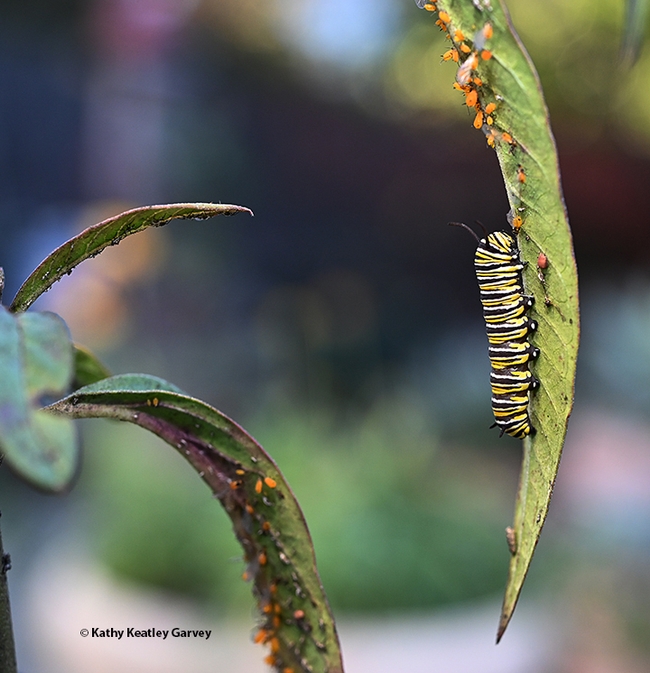
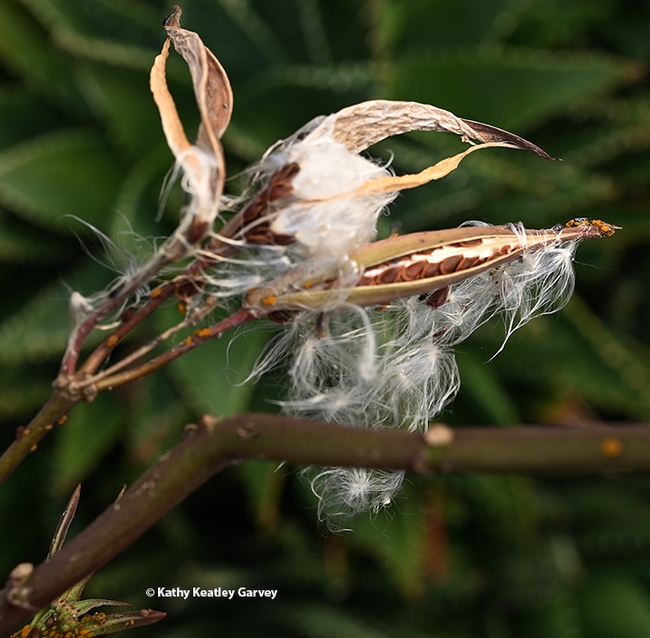
- Author: Kathy Keatley Garvey

The annual meeting, hosted by the Entomological Society of America (ESA), is taking place Nov. 5-8 at the Gaylord National Resort and Convention Center in National Harbor, Md.
The theme: "Insects and Influence: Advancing Entomology's Impact on People and Policy."
At the helm of ESA this year--and influencing scientists, insects and the general public--are four women scientists:
- President: Marianne Alleyne, University of Illinois at Urbana-Champaign
- Vice President: Jennifer Henke, Coachella Valley Mosquito and Vector Control District
- Vice President-Elect: Lina Bernaola, Texas A&M University
- Past President: Jessica Ware, American Museum of Natural History
Among the top honorees at Entomology 2023 is UC Davis doctoral alumnus Douglas Walsh, professor and Extension specialist in the Department of Entomology, Washington State University (WSU). He is one of six newly elected Fellows
"Walsh is known internationally for his research on the modes of action and resistance mechanisms of acaricides on spider mites and regionally in the Pacific Northwest for his extension and outreach efforts on specialty crops," ESA announced in a news release, citing that:
"Walsh has maintained a well-funded (more than $30 million) and productive program as the research director of the Environmental and Agricultural Entomology Laboratory located at the WSU Irrigated Agriculture Research and Extension Center in the Yakima Valley near Prosser, Washington. Walsh is the Extension integrated pest management (IPM) coordinator for Washington State and the Washington State liaison representative to the U.S. Department of Agriculture IR-4 Project."
"Walsh has an extensive and varied integrated pest and pollinator management research and Extension program assisting regionally important commodities including hops, alfalfa, grapes, and mint. Walsh also directs environmental impact studies on alfalfa leafcutting and alkali bees, the key pollinators of alfalfa produced for seed. Walsh's efforts in IPM have resulted in the documented reduction of over 100,000 pounds of insecticide use in the Pacific Northwest annually."
Born in New York in 1963 and a resident of California since 1969, Walsh holds a bachelor's degree in biology from UC Santa Cruz (1985). He received his doctorate in entomology from UC Davis in 1998, studying with major professor Frank Zalom, who went on to become a UC Davis distinguished professor and president and Honorary Member of ESA. "He is very deserving," Zalom said. "I couldn't be more proud of all that he has accomplished." Zalom is now emeritus, but continues to do research.
"I was Frank's first PhD student," Walsh said. "Frank had one before me, Rachid Hanna. Frank picked up Rachid when Rachid was orphaned when his original professor left UC Davis. Rachid and I quibble about who was Frank's first student. I'm the first that went from start to finish with Frank."
"(Professors) Sean Duffy and Harry Kaya were also on my PhD committee," Walsh said.
Outstanding Graduate Student. Kaya remembers Walsh well. "He was studying integrated pest management at UC Davis and was an outstanding graduate student in Frank Zalom's lab," Kaya said. "Even as a graduate student, he published some significant papers on IPM research, and I had no doubt that he would excel in research in his post graduate years. He has not only done superb IPM research but has been a leader in the Entomological Society of America as well as other national and international organizations. He richly deserves being elected as an ESA Fellow."
Walsh joined the WSU Department of Entomology as assistant professor in 1998 and advanced to associate professor in 2003 and to professor in 2007. The author of more than 200 publications, he annually delivers more than 35 Extension presentations. He has mentored 12 doctoral students and 11 master's degree students.
Walsh served as president of the Pacific Branch of ESA (PBESA) in 2010 and represented PBESA on the ESA governing board from 2013 through 2019. Among his ESA awards: Excellence in IPM Award and he led two teams that received the IPM Team Award.
A WSU news story (Sept. 7, 2023) related that Walsh has "worked primarily on pest control issues, mostly on hops, grape vines, mint, and alfalfa. One of his first successes at WSU in 2005 involved developing a novel method for controlling cutworms, which climb up from the soil in spring to nibble on grapevine buds."
Walsh initially set out to become a botanist. “I was working in a local Extension office in California after I got my bachelor's degree," he told the WSU writer Scott Weybright. "That work involved battling spider mites on strawberries. I kind of fell into entomology, but I love the work and the creative solutions we find to help growers."
His wife, Catherine (Kikie) is a senior software engineer with Altera Digital, a hospital software firm. The couple, married 35 years, raised three children, Claire, Russ, and Jeff, all WSU grads. Claire is the lifecycle marketing manager with Niantic Labs; Russ is working toward his master's degree in teaching at WSU Tri-Cities: and Jeff is a site reliability engineer at TikTok.
Other newly inducted ESA Fellows are:
- Cassandra Extavour, Harvard University
- James Hagler, U.S. Department of Agriculture-Agricultural Research Service
- Alvin M. Simmons, U.S. Department of Agriculture-Agricultural Research Service
- Lukasz Stelinski, University of Florida
- Edward L. Vargo, Texas A&M University
Founded in 1889, ESA is a worldwide organization of more than 7000 members, who are affiliated with educational institutions, health agencies, private industry, and government. Members are researchers, teachers, extension service personnel, administrators, marketing representatives, research technicians, consultants, students, pest management professionals, and hobbyists.

- Author: Kathy Keatley Garvey

The book was released in the UK on Oct. 3, 2023, and it will be released in the United States on Jan. 9, 2024.
RTÉ, or Raidió Teilifís Éireann, is an Irish public service broadcaster that produces and broadcasts programs on television, radio and online. Launched in January 1926 and headquartered in Donnybrook, Dublin, it is known as one of the world's oldest continuously operating public service broadcasters.
At the onset of the 11-minute interview, an RTÉ announcer noted that The Lives of Butterflies "showcases extraordinary diversity of world's butterflies, while exploring their life histories, behavior, conservation and other aspects of these most fascinating and beguiling insects."
Listen to the butterfly podcast here: https://www.rte.ie/radio/radio1/clips/22294525/
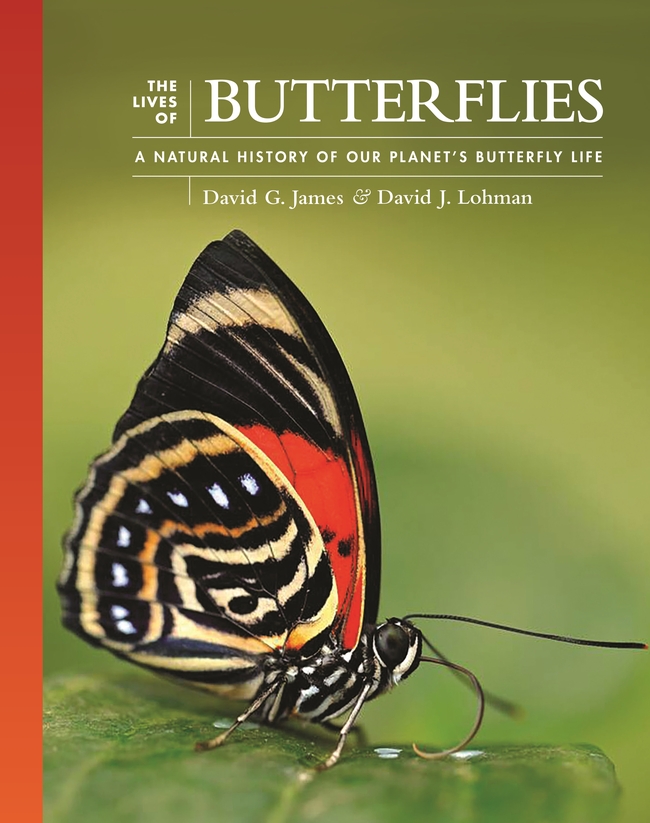
Éanna Ní Lamhna is a biologist, environmental consultant, radio and television presenter, author an educator. "She is one of the best-known public figures in Ireland in the area of nature and the environment, and was listed as one of Ireland's 'Influential 100' in 2012," according to Wikipedia. She is a mainstay on RTÉ's "Mooney Goes Wild." Lamhna holds a doctorate in botany from UCD--no, not the University of California, Davis, but University College Dublin.

WSU biosketch: "David James developed a passion for entomology at the age of 8 in England by rearing caterpillars in his bedroom. He studied zoology at the University of Salford near Manchester, then migrated to Australia to work for the New South Wales Department of Agriculture on ways of controlling agricultural pests like locusts and mites. A PhD on the winter biology of monarch butterflies in Sydney followed and a career as a biocontrol scientist in horticulture blossomed." (See more here). He studies the migration of Pacific Northwest monarchs to the overwintering sites along coastal California.
What Did They Discuss?
- What exactly is a butterfly and how is it different from a moth?
- Are there more moths in the world than butterflies?
- How do butterflies hear?
- What's the largest butterfly in the world?
- What sets butterflies apart from other insects?
- What kind of digestive system do butterflies have?
- Why do some butterflies land on your arm and drink your sweat?
- Why do male butterflies feed on crocodile tears?
- Why did British scientist Miriam Rothschild call male monarchs "male chauvinist pigs?"
- How do you tag monarchs and what have we learned?
It's an excellent podcast--and you'll love listening to the lilting Irish accent of Éanna Ní Lamhna, coupled with the distinguishable English/Australian accent of David James.
And the answers to the above questions...
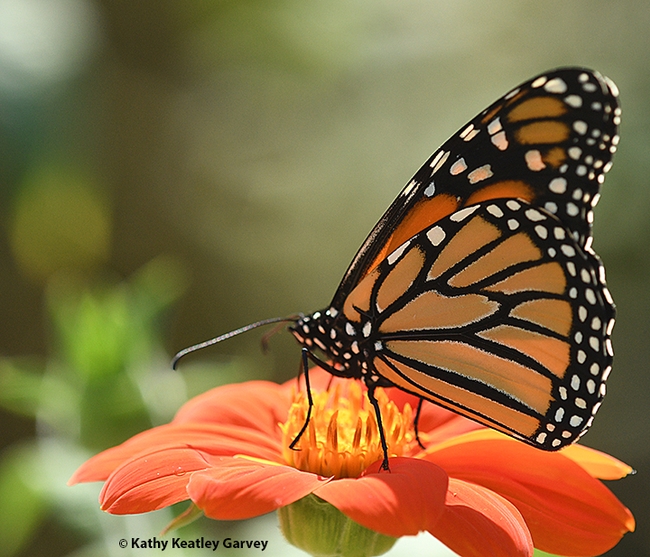
- Author: Kathy Keatley Garvey
Question: What's better than seeing a monarch butterfly?
Answer: Seeing two monarch butterflies sharing the same blossom on a butterfly bush!
Scenario: Monarchs (Danaus plexippus) from the Pacific Northwest are fluttering through Vacaville, Calif. and stopping in our pollinator garden for some flight fuel before heading off to their overwintering sites along coastal California.
Background: I am watching for tagged butterflies from the migratory monarch project of Washington State University entomologist David James. (After all, one tagged by his citizen scientist Steven Johnson of Ashland, Ore., on Aug. 28, 2016, fluttered into our yard seven days later. James said it flew 285 miles in 7 days or about 40.7 miles per day.)
Menu: In our pollinator garden, the flight fuel includes nectar from the Mexican sunflower (Tithonia rotundifola), tropical milkweed (Asclepias curassavica), butterfly bush (Buddleia davidii), and Zinnias, a genus of plants of the tribe Heliantheae within the family Asteraceae.
Action: On Sept. 27, a male monarch touches down on our butterfly bush and begins sipping nectar. Soon, another joins him.
The two monarchs engage in what appears to be a territorial battle. It's a kaleidoscope of orange and black wings, tumbling, wobbling, recovering.
And then, wings up! The monarchs take flight.
